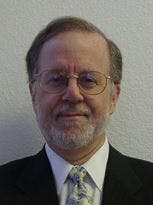A recent T&D World Grid Optimization article, Is California Able to Handle 100% Renewables? included two fascinating quotes from CPUC President Picker. In one he declares, “We could get to 100% renewables”, and in the second he claims, “Getting to 50% is not really a challenge”. Both will require some expensive infrastructure, which is easiest to explain by starting with Mr. Picker’s 100% renewables statement.
Getting to 100% might be possible but whether it is practical, desirable, affordable, and sufficiently reliable or the best way to reduce GHG emissions is a different matter. It’s well known that since wind and solar are not controllable, among other things the grid requires storage that can capture surplus output when the sun and wind are abundant and release it to carry the grid through periods when the wind is still or the sky is cloudy, or the days are shorter, or all of the above. When the grid is powered 100% by renewables, the most critical need is for large amounts of seasonal storage.
For the sake of illustration let’s assume that any seasonal storage requirements could be met with an amount equal to 100% of California’s average daily demand for electricity, which is about 660,000 MWh (660 GWh) at the current rate of annual electricity consumption. 100 pumped storage plants the size of Helms could provide 660 GWh of storage at an installed cost of around $330 billion, assuming enough suitable sites are even available and the Sierra Club wouldn’t try to kill some or all of them. Sixty six million of Tesla’s 10 kWh Powerwall units could also meet the need at a cost based on current retail prices of about $465 billion, though building them all would require the full output of Tesla’s factory in Reno for 27 years. That’s about 6 Powerwalls for every electric utility customer in the state. There’s outstanding pumped storage potential using LakeTahoe as the upper reservoir, which could provide 660 GWh of storage with a mere five foot change in lake elevation. For this option to work, one would have to find a suitable place on the valley floor to hold a half million acre feet of water and then persuade environmental groups to accept the idea.
Advances in storage technology are unlikely to provide the same kinds of dramatic improvements in storage energy density and cost performance we’ve seen with semiconductors. Pumped storage is about as cheap as it can possibly get. There may be some room to reduce costs for compressed air storage and flow batteries, but 50% reductions would be a stretch. For other kinds of batteries, there may be ways to reduce cell costs significantly but balance of system costs like inverters and controls will keep packaged system costs well above the magic $100/ kWh number often cited by DOE and the national laboratories as the threshold for economic viability. But even at $100/kWh, the rate impact for just 1 days’ worth of storage works out to around $400/year for a typical residential customer, and one day is probably not nearly enough. All of which means in a grid with 100% renewables, wind turbines and solar panels are likely to be the least costly elements.

